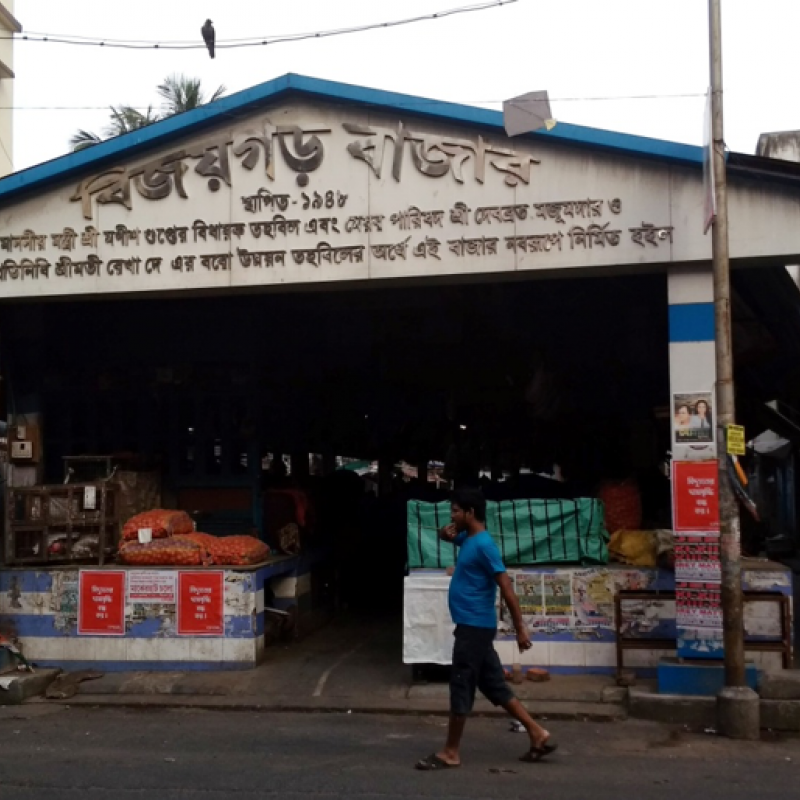Calcutta (Kolkata) was deeply affected by the partition of British India. Sir Cyril Radcliffe’s line that separated the eastern wing of Pakistan (present-day Bangladesh) from India had devastating consequences for the region’s economy and society.
Calcutta, being the most important urban centre of this region, perhaps suffered most. The most immediate and difficult problem it faced was the continuous influx of refugees that began in the immediate aftermath of Partition and continued for decades. By 1951, according to the census data, Calcutta had 4,33,000 Bengali Hindu refugees coming from East Pakistan and their numbers continued to increase over the years.[1]
The early batches of the refugees belonged mostly to the middle class; they were educated and often had some connections in the city. After 1950, refugees belonging to the poorer sections of society started to reach Calcutta in large numbers.
The government of West Bengal was not prepared for this refugee influx. The needs and expectations of these groups of refugees were not uniform, and the provincial and Central governments failed them all. Arrangements it made were ad hoc and inadequate, forcing the better-off refugees to take matters in their own hands and their subaltern counterparts to rot in camps or slums and railway stations of Calcutta.
Setting up a Squatter Colony
The earliest squatter colonies of Calcutta came up in the southern and the northern fringes of the city. Generally the process of setting up a squatter colony involved the following steps: first a vacant plot was identified by a refugee or a small group of refugees (it could be privately owned, government property or an abandoned military area); next, it would be occupied by the refugees, often during the night; the land would be divided into smaller plots and finally it would be distributed among other refugees on a first-come-first-served basis. The refugee families would have to pay a nominal amount to the ‘colony committee’ (formed with the people who had led the squatting movement) and were to build their huts as quickly as possible. The colony committee was in charge of daily management of the colony and of building infrastructures, setting up schools, markets and temples, and negotiating with the government and locals. Since such occupation of land had no legal standing and often involved confrontation with the owners and/or the government, they came to be known as jabardakhal colony, meaning occupied by force.
The earliest colony was Bijoygarh, which was established in 1948 in an abandoned military barrack in Jadavpur area in the south of Calcutta. There were 149 squatter colonies in and around the city by the end of 1950. In the next 20 years, another 175 squatter colonies came up in West Bengal.[2]
Many of the refugee colonies were named after important freedom fighters and nationalist leaders. The southern and northern fringes of Calcutta were dotted with Bapujinagar (named after M.K.Gandhi), Netaji Nagar (after Subhash Chandra Bose), Asutosh Colony (after Asutosh Mukherjee), Sucheta Colony (after Sucheta Kripalini), Suryanagar (after Surya Sen), Katju Nagar (after Kailash Nath Katju) or a more generic Shahidnagar Colony (Martyr’s Colony).
With these names, the refugee leaders of these colonies paid homage to the freedom movement. This was, of course, a way of legitimising the squatter colonies in a newly independent country and placing the refugees within the narrative of the nationalist movement. In many autobiographical writings, the bhadralok (respectable) refugees wrote about the contributions of their families and villages in the freedom movement. They often mentioned how by accepting Partition—an event that turned them into minority first and refugees later—they made huge sacrifices for the Indian nation.
Not all colonies, however, were named after the nationalist leaders. Colonies like Bijoygarh, Azadgarh and Ramgarh referred to a different politics of naming. ‘Garh’ in Bengali means bastion or fort. As the colonies were set up on illegally occupied lands, the landowners and the government made attempts to remove the squatters. Pitched battles were fought between the refugees and the militia of the local landlords. Refugees also put up resistance against governmental attempts to evict them. Names like Bijoygarh and Azadgarh marked the success of the refugees in holding the ‘fort’, as it were. The names of the colonies remain unchanged today, carrying the memories of refugee resistance and their politics of representation.
Naming was also a mode of remembering. Many refugee entrepreneurs named their shops after the places of their origin. Even today Kolkata has shops with names like East Bengal Sweets, Dhaka Mistanno Bhandar (Dhaka sweet shop), Chittagong Optical and Faridpur Stores, reminiscent of a time of intense movement of people, skills and memories. (Fig. 1)

Structure of a Colony: Then and now
Most refugee colonies had similar structures, traces of which are visible even today. Being populated by bhadraloks, most of the colonies had primary schools since the time they were set up. The schools were populated by children from these localities and the teachers were also recruited from among the residents. Over the years, they were recognised by the government and many among them now provide secondary education.
However, their relevance in the localities have declined. When we visited some colonies of south Calcutta, we were told that being ‘Bengali medium’, the colony schools no longer attracted students from the locality. Upper-middle-class or middle-class families send their children to the English-medium schools.
With the extension of the Eastern Metropolitan bypass (E.M. Bypass) and the metro rail, the colony areas have become prime locations in the city. The property prices have skyrocketed and many of these colonies are now full of high rises, fancy restaurants and supermarkets catering to a well-to-do population. In such a setup, the dwindling condition of the colony schools is perhaps not surprising. The public libraries, also a common feature of these colonies, do not receive too many readers these days. Their frequenters now are a few retired men who sit and read newspapers and chat among themselves. The refugee colonies also had clubs, markets (Fig. 2) and ritualistic places like harisabha (a platform for religious congregations, particularly for the Vaishnavites) and temples.
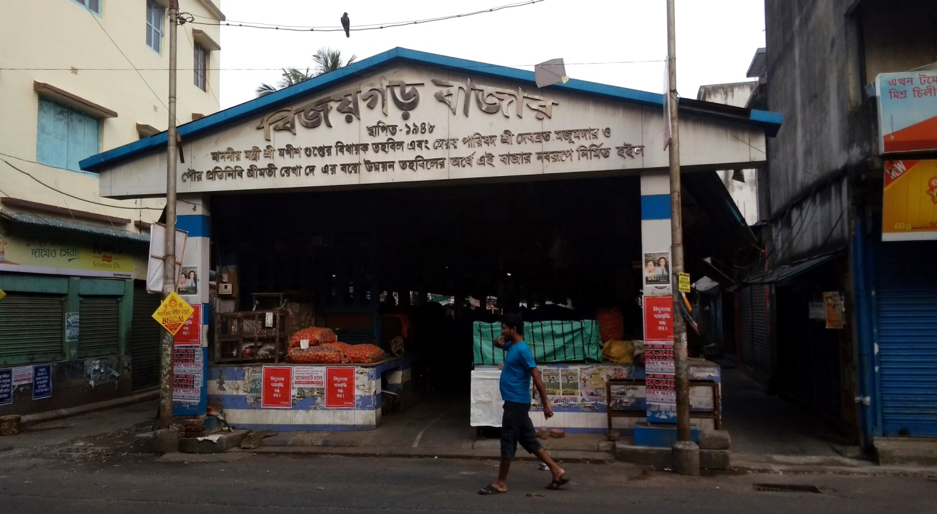
However, the clubs and the adjacent fields are still in use. Local boys visit to play indoor and outdoor games, the grounds still host Durga pujas, and the clubs are venues for performance art rehearsals.[3] (Fig. 3)
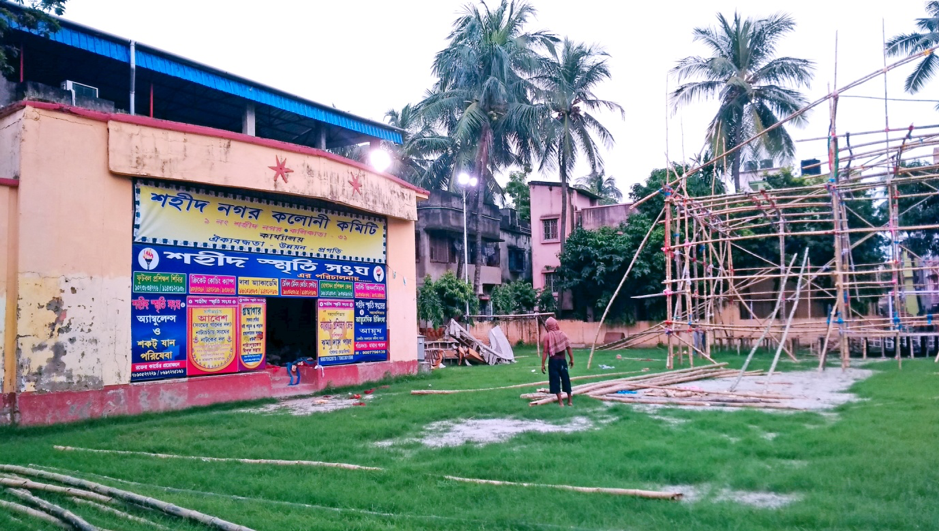
Politics of a colony
The refugees who came to West Bengal after Partition became active participants in the politics of the state. The most important platform of refugee politics was the United Central Refugee Council (UCRC), which was formed in 1950.[4] Dominated by the Communist Party of India (CPI), UCRC had a strong hold over almost all the squatter colonies of Calcutta and successfully led a series of refugee movements against the Congress government.
The first movement that directly involved the colony refugees took place in 1951 and was against a government bill that tried to evict the settlers from the properties that they had illegally occupied. Named the ‘Eviction of Persons in Unauthorized Occupation of Land Bill’ (more commonly known as Eviction Bill), it directly threatened the squatter colonies. The colony committees came under the UCRC and organised a successful campaign against the Bill, forcing the government to drastically amend it. The Act that finally saw the light of day was renamed ‘The Rehabilitation of Displaced Persons and Eviction of Persons in Unauthorised Occupation of Land Act’ and ensured monetary compensation and suitable rehabilitation in case of eviction.
The success of UCRC in 1951 strengthened the position of the Communist Party in most of the refugee colonies. But whether the party exploited the refugees for its electoral needs or it fought for refugees and the urban poor with some integrity has been a matter of debate among historians.[5] Regardless, from the early 1950s, the refugees rallied behind the Left. The refugee support to the Left was not only limited to the movements that had to do with their needs. The colony refugees participated enthusiastically in a series of Left-led political movements in 1950s and 1960s, which included the movement against the hike in tram fare (1953), the teachers’ movement (1954) and the food movement (1959, 1966). As the Communist Party split twice in 1960s on ideological grounds—first in 1964 to form the Communist Party of India (Marxist), and then in 1969 to form the Communist Party of India (Marxist Leninist)—the colonies became sites of contestations between various shades of the Left. But as the CPI(M) came to power in West Bengal in 1977, it managed to further consolidate colony support through welfare schemes and political mobilisation. Recently, however, with the coming of the Trinamool Congress government in 2011, the strength of CPI(M) has rapidly eroded in most of the colonies of Kolkata.
The material remnants of an intensely political past and evidences of more contemporary tensions are still prominent in many refugee colonies. They have plaques and columns to commemorate the early struggles of the refugees and the contributions they made in other Left movements. In this context, Netaji Nagar Colony deserves a special mention. Located near Tollygunge, it has a shiny big statue of a refugee family carrying their meagre belongings. The colony club, school, Netaji Nagar College, puja ground and the evening market are all adjacent to the statue. Together they make this the centre of the colony space. Built sometime after the Left Front came to power, the statue has a board in front of it with the following words: ‘Bastur tagide srishtir karigar, tomaderi srishti ajker e nagar’, meaning, compelled by homelessness, you became the creators, the city stands today on those efforts.
On the other side of the statue is another board that says, ‘This statue is the symbol of the refugee movement. All the political parties, organizations and individuals are requested to keep this statue and the area clean.’ This board is significant given the contested politics of this locality.
Today Netaji Nagar is one of the few remaining CPI(M) strongholds in the city and the Trinamool Congress (TMC) is desperately trying to get a foothold here. There is a small complex with a martyrs’ column right next to the statue. But the coexistence of red flags and TMC flags around this column indicate this contestation. (Fig. 4)
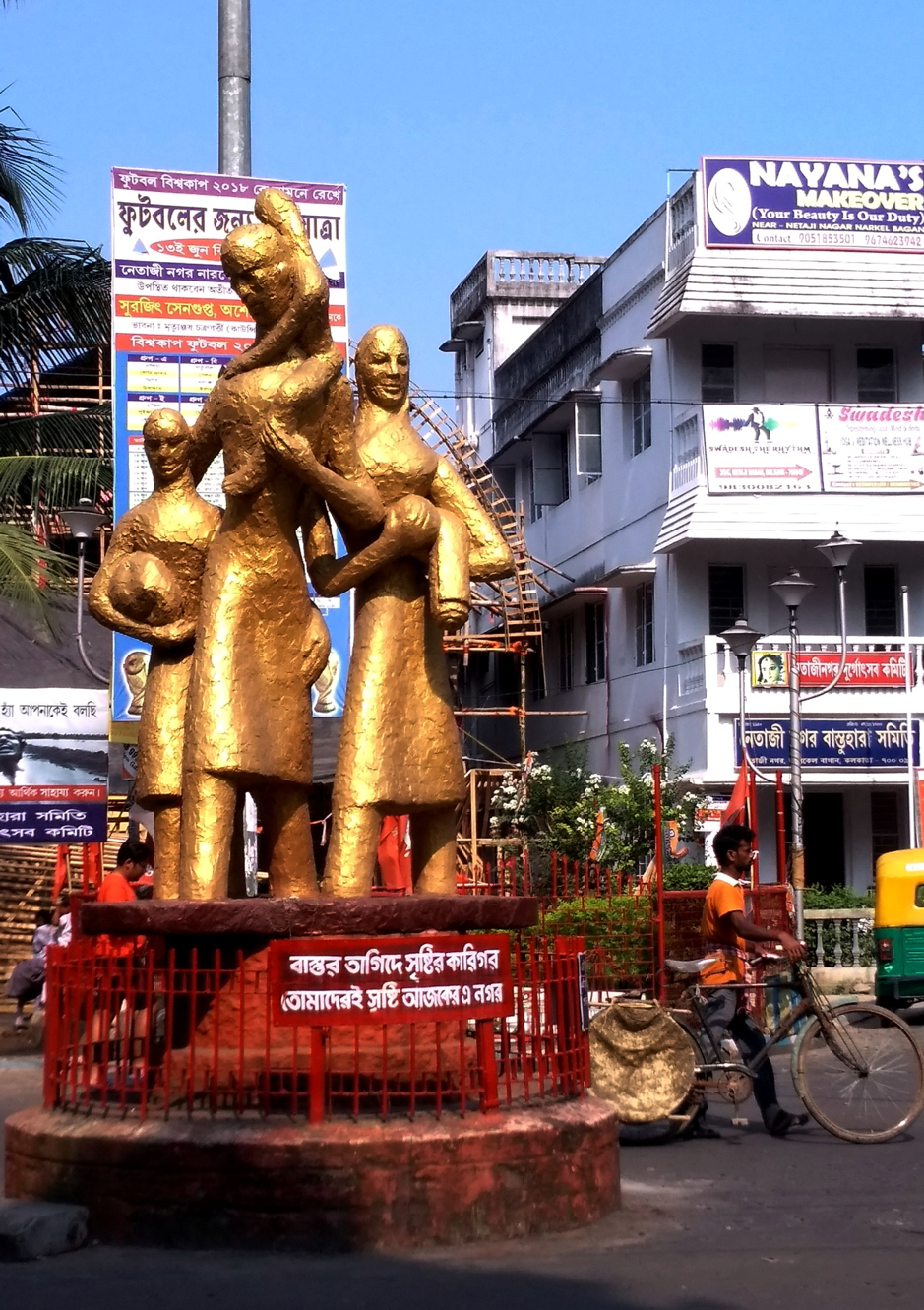
Another example of this contestation is the existence of two Durga pujas in close proximity—the old one is organised by the CPI(M)-dominated colony committee and the recent one, organised by TMC supporters. Though it is situated right in the middle of this contested space, the statue and the small plot on which it stands have no flags or political posters, providing it a sense of ‘ritualistic purity’. If it depoliticises the refugee struggle, it is also a political move to resist TMC’s possible attempts to appropriate it.
Colony and its Margins
The establishment of refugee colonies created new margins and triggered new displacements. As refugees started to occupy land, Muslims were forced to move out. Some displaced Muslims left Calcutta for East Pakistan. By 1951, East Pakistan had 4,86,000 Muslim refugees from West Bengal. It is difficult to ascertain how many of them were from Calcutta. But as Joya Chatterji says, ‘The 1951 census discovered 1,30,000 fewer Muslims in Calcutta than it expected to find.’[6] The actual numbers were perhaps higher than the census figures. Not all the ‘missing Muslims’ went to Pakistan either. As Chatterji mentions, many moved to the border districts where their coreligionists were more numerous. Many among the Muslims who could not or did not leave Calcutta, moved to Muslim-dominated regions within the city.
Partition, refugee flow and the subsequent communal riots (particularly the riot of 1950) intensified the process of ghettoisation within the city[7]. The southern edge of the city had a substantial Muslim population before Partition. But as refugees poured into the city and started squatting in these areas, the Muslims felt intimidated.
Take for instance, Selimpur (Dhakuria, South Calcutta). The name itself, an almost hundred-year-old graveyard, two mosques and two shrines remind us of the locality’s Muslim past. After Partition, as refugee colonies emerged in and around Selimpur, the new neighbours started raising objections against using the graveyard to bury the dead. (Fig. 5) Young refugee boys started using parts of the burial ground as a playfield. In 1956, the local refugees also tried to stop the celebration of Shab-e-Barat. The presence and the attitude of the refugees cornered the local Muslims, forcing most of them to leave for a safer place within or outside the city. Today, only a handful of Muslim families live in Selimpur.
Selimpur is not an exception. An octogenarian resident of Asutosh Colony remembered how during the 1964 riot, their Muslim neighbour left that area for Tiljala, where there were more Muslims. ‘Though there were no killings or violence, the Muslims were intimidated by the local refugees,’ he said. Similarly, Sajal Sengupta, a resident of Shahidnagar Colony, told us, ‘Muslims had some properties in this area. They started leaving as refugees started to settle down.’
Thus, like Delhi, Calcutta also witnessed tension and conflicts between local Muslims and incoming Bengali Hindu refugees. Consequently, Muslims became invisible in large parts of the city. These conflicts between the Bengali Hindu refugees and the Muslim residents remain largely undocumented by the scholars of Partition. But the residents of the refugee colonies remember these frictions, perhaps with a tinge of guilt. The leftward turn of refugee politics in West Bengal makes them uncomfortable, at least outwardly, of the communal past of their colonies. And the traces of a more widespread Muslim settlement remain in Calcutta in forms of dilapidated imambaras, mosques hidden behind shops, small dargahs and graveyards.
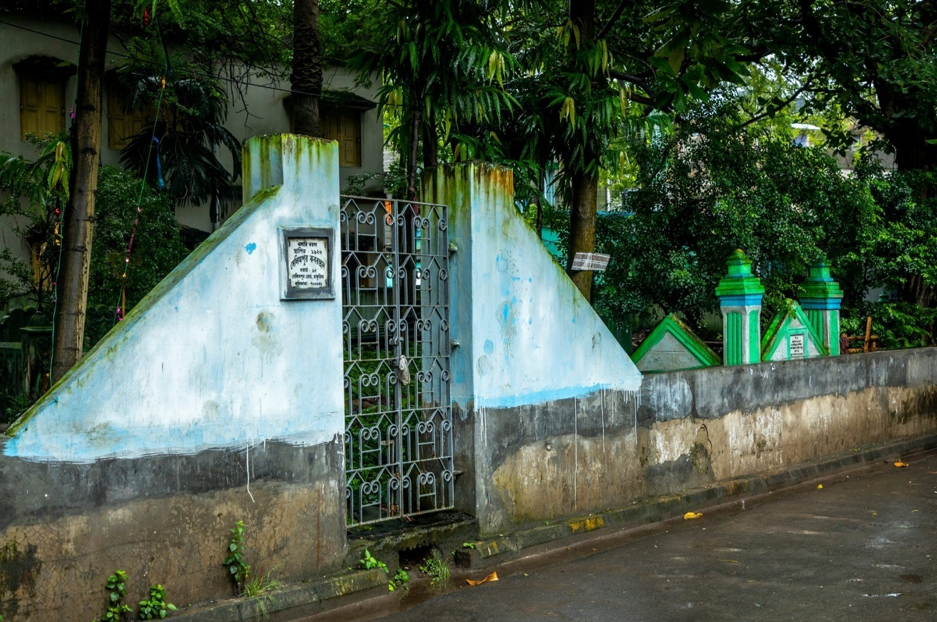
Partition and the subsequent refugee flow changed the city of Calcutta. As refugees set up colonies in and around the city, it expanded rapidly. This is a fact Pranati Chaudhuri elaborates on in her book:
In terms of physical impact on cultural landscapes, migration of refugee population played a key role in forming coalescence of the metropolis district which was, before Independence, only a combination of different isolated urban settlements. The refugee population pioneered in extending the horizon of metropolitan living beyond the limits of the existing settlements. The refugee population and their settlements are largely responsible to set into motion the growth dynamics observed now in different parts of metropolitan district. The urban areas have become denser and the vacant marshy areas in the suburbs of Calcutta have come under habitation, due to the impact of migration from East Pakistan.[8]
If the refugees expanded the city in all directions, they also turned it into more of a Hindu space with a few ‘Muslim pockets’. The cosmopolitan character of the city was lost to an extent. However, refugee politics was not framed around religious identities. Rather, they rallied behind the Left political parties and participated in popular movements in demand of fare wage, accommodation, adequate and affordable ration and so on. They turned Calcutta into a political city—a city of protest marches, strikes and street corners.
Like the other cities of the world, Calcutta has changed continually. Today, it is increasingly becoming a city of flyovers, shopping malls and high-rises. The refugee colonies, located in today’s ‘posh’ areas of the city, are also undergoing rapid transformation. But many of them still possess traces of the ‘partitioned times’—in their names, in the ‘routine buildings’ such as schools and markets that still exist, in plaques and columns, and the dilapidated mosques and unused graveyards.
Notes
[1] Chatterji, The Spoils of Partition, 119.
[2] Chatterji, ‘“Dispersal” and the Failure of Rehabilitation,’ 995–1032.
[3] I visited these areas twice–on September 2, 2018, and September 19, 2018. I informally talked to local people, particularly the seniors, whom I could find in the colony committee’s office, colony club and library. On the second day, I was accompanied by Priyankar Dey who took all the photographs (except otherwise mentioned). Names of individuals, wherever used, have been changed to protect their identities.
[4] The other important refugee organisation was Refugee Central Rehabilitation Council (RCRC) which competed with UCRC in the initial years of 1950 to mobilise the colony refugees. RCRC was the refugee wing of Revolutionary Socialist Party (RSP). Though it initially had some strength in a few colonies, UCRC outdid it over a few years. Moreover, in many of the movements against the Congress government, RSP and CPI came together and so did RCRC and UCRC.
[5] Chakrabarti, The Marginal Men; Chatterji, ‘Rights or Charity? Government and Refugees,’ 74–112.
[6] Chatterji. ‘Of Graveyards and Ghettos,’ 229–49.
[7] Ibid.
[8] Chaudhuri, Refugees in West Bengal.
Bibliography
Chatterji, Joya. ‘‘Dispersal’ and the Failure of Rehabilitation: Refugee Camp-dwellers and Squatters in West Bengal,’ Modern Asian Studies 41, no. 05 (2007): 995–1032.
———. ‘Of Graveyards and Ghettos, Muslims in West Bengal, 1947–67.’ In Living Together Separately: Cultural India in History and Politics, edited by Mushirul Hasan and Asim Roy, 229–49. New Delhi: Oxford University Press, 2005.
———. ‘Rights or Charity? Government and Refugees: The Debate over Relief and Rehabilitation in West Bengal, 1947–1950.’ In The Partition of Memory: The Afterlife of Division of India, edited by Suvir Kaul, 74–112. Ranikhet: Permanent Black, 2001.
Chakrabarti, Prafulla K. The Marginal Men: The Refugees and the Left Political Syndrome in West Bengal. Kalyani: Lumiere Books, 1999.
Chaudhuri, Pranati. Refugees in West Bengal a Study of the Growth and Distribution of Refugee Settlements within the CMD. Calcutta: CSSSC, 1983.
